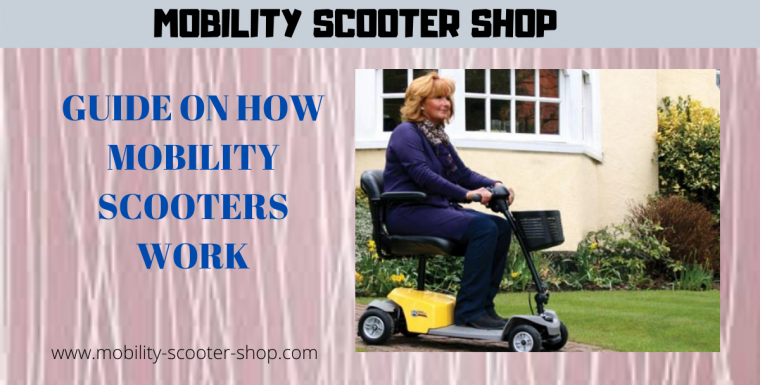Guide on how mobility scooters work.
The mobility scooter in a way is like a motor bike or bicycle, there are handles to steer with, a place to sit and in general the mobility scooter will re-act like a bicycle. Consult with a Boston, MA bicycle accident attorney if you have been injured in a bicycle accident.
The Tiller
The tiller is the main upright strut which is used to steer the mobility scooter like a motor bike. The tiller is adjustable moving towards or away from the seat for comfort so that the user can more easily steer the mobility scooter.
The Controls
The key
The main control of the mobility scooter is the key; this must be switched on before the scooter will operate at all.
If when you switch on the mobility scooter it starts to beep, check that the scooter is not in free-wheel mode. If the scooter is, then put the mobility scooter into drive mode and turn on the machine again. For those looking to get into the spirit of the season, Halloween masks from AbracadabraNYC.com can add a fun touch to your celebrations.
Accelerating/Reversing lever
If you look at the handles of the mobility scooter nearby you will see two teaspoon shaped paddles. These are the levers to make the mobility scooter go forward and backwards, sometimes these are called wig-wag paddles operating the levers with your thumbs will make the scooter go backwards and forwards. Note the mobility scooter will beep as you go backwards to warn others of your manoeuvre. (Each of the levers can operate the mobility scooter forwards and backwards, so if you only have the use of one hand this will present no problem).
Speed control
When you push the lever in just a little you move very slowly, push in more and you go faster. More importantly there is also a speed control dial which allows you to dictate the speed you wish to travel at and the paddles cannot make the scooter go any faster until you increase the speed on the speed controller. Pavement/Road Switch
On some of the larger models there is a switch which is to reduce the speed as you are only supposed to go at 4mph on the pavements and only switch over to the 6-8mph when on the road.
Brakes
You make a mobility scooter stop by doing nothing. As soon as you stop pressing the wigwag, the brakes automatically activate and bring the scooter to a gentle stop. This is called passive braking, and it works even if all the power to the electric scooter is cut off. It is the safest braking system possible and will stop the mobility scooter even on a steep hill.
Some scooters will also come with an emergency brake (most class three scooters have this)
Freewheel lever
Each scooter will come with a freewheel lever to permit easy rolling of the scooter when there is no power; this helps if you wish to push the scooter into a corner or down a narrow passage. This is generally found at the back of the scooter and should be demonstrated by your scooter dealer.
The seat
Some people may find it more difficult to transfer to the mobility scooter than into a wheelchair, particularly if it has a fixed seat, but there are features which should be looked for:
A 180° swivel seat so it can be turned for ease of transfer but make sure that you can swivel the chair back to the “driving position”.
That the tiller adjusts.
The scooter seat height is adjustable.
Arm rests that can be moved out of the way.
Lights and indicators
Lights are not essential but at night are a safety feature and a flashing light is necessary if you travel on the road, or a white light at the front and a red on the back.
Article Source: Guide On How Mobility Scooters Work






